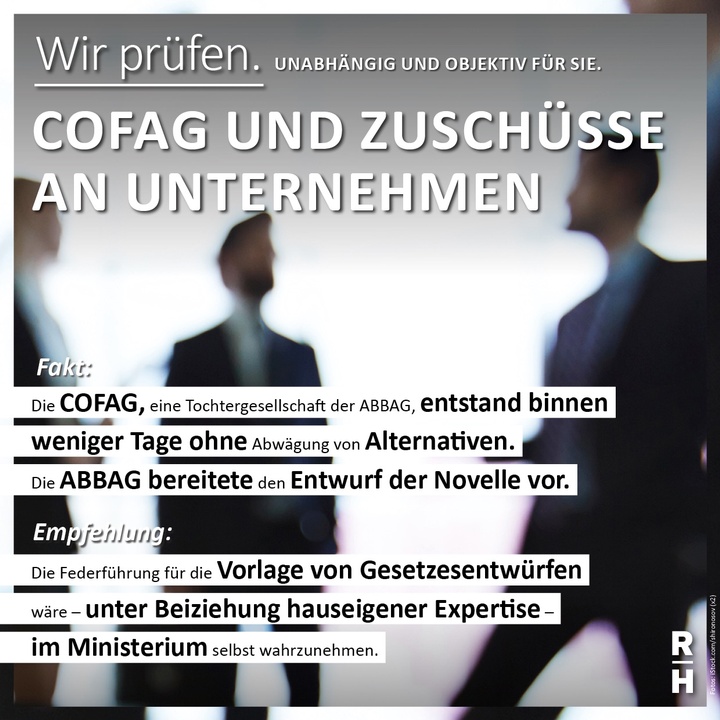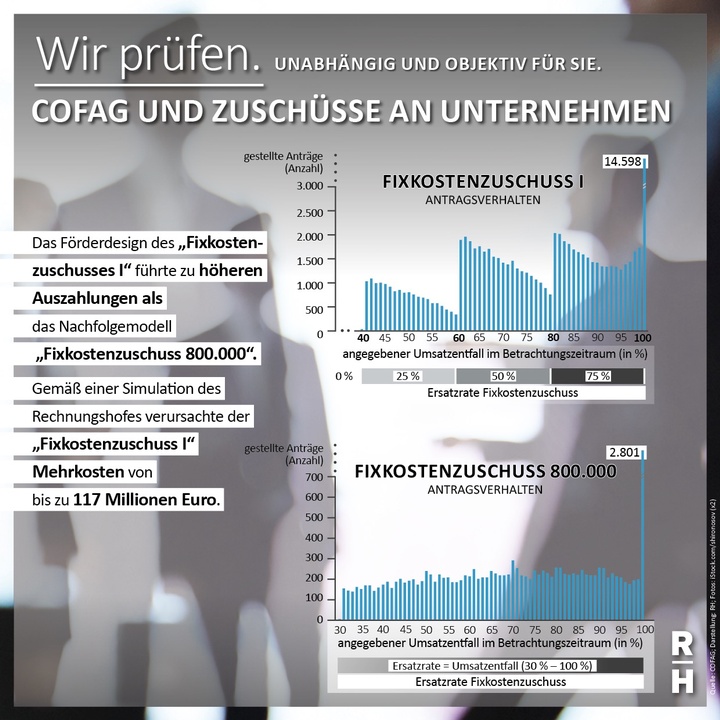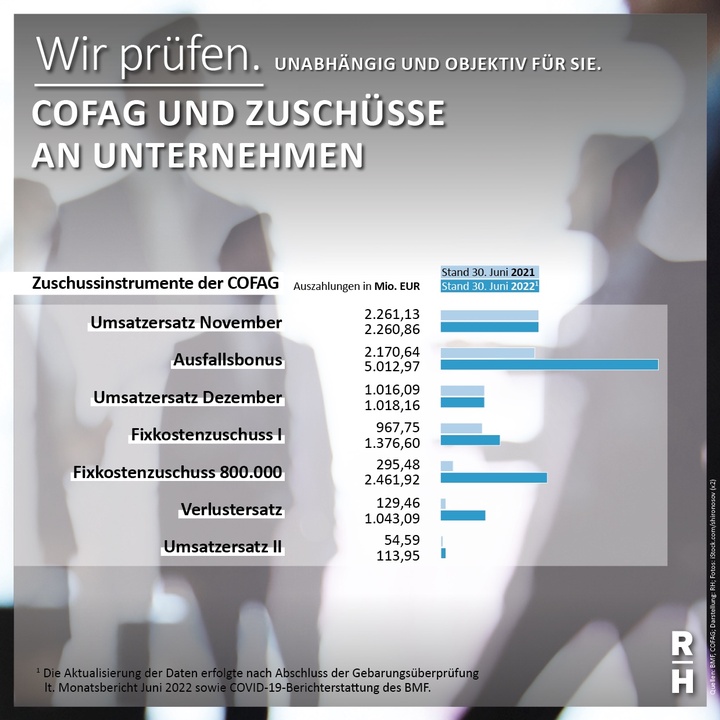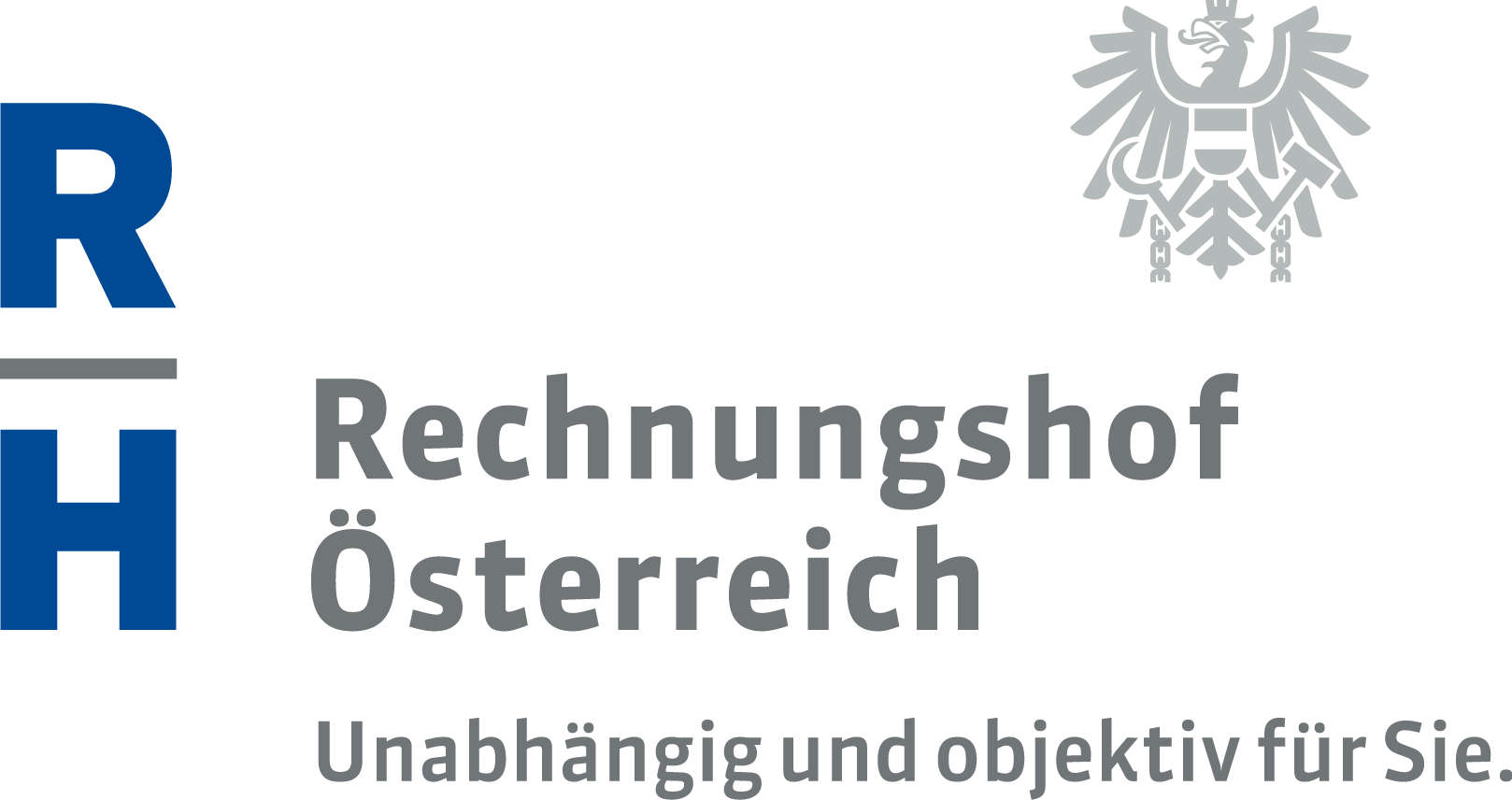ACA identifies a “considerable potential for overfunding” as regards the subsidies granted by COFAG

It was only within a few days that the Federal Ministry of Finance created a new funding company to settle COVID-19-related financial measures for companies, namely the COVID-19 Federal Financing Agency (COFAG). The Federal Government, as the sole owner, endowed it with EUR 19 billion. In its report "COFAG and Grants to Companies" published today, the Austrian Court of Audit (ACA) assesses its establishment and the composition of its management and supervisory bodies.
The second major part of the report is devoted to the grant instruments, specifically their design and processing. In many cases, the auditors depict how overfunding could have been avoided. The use of a staggered calculation model for the Fixed Cost Subsidy I alone resulted in higher disbursements ranging from EUR 101 million to EUR 117 million. Furthermore, the expertise of the Federal Ministry of Finance was not used comprehensively. The audited period ran from March 2020 to June 2021.
The core tasks of ABBAG, the government-owned holding company established to oversee an orderly wind-down (“Abbaumanagementgesellschaft des Bundes”), concern bank resolution and asset liquidation. With an amendment to the law of 15 March 2020, its corporate object was expanded, in particular to include the settlement of COVID-19 financial aid operations. Eventually, COFAG was established by ABBAG on behalf of the Federal Minister of Finance on 27 March 2020.
Integrating the technical expertise of public administration
From the ACA’s viewpoint, it is understandable that the Federal Government had to take swift decisions, in particular with a view to preventing permanent damage to the economic structure. The cabinet of the Federal Minister of Finance coordinated the preparation and implementation of the COVID-19 financial aid for companies without integrating the technical expertise and experience from the ministry. The ACA criticizes the fact that a new funding institution was created without a comprehensible documentation of the formation of will and the decision-making in the Federal Ministry of Finance and without evaluating alternatives. Such a documentation is, however, also required in a crisis situation to provide evidence of the legality and regularity of the respective proceedings.
The ACA therefore recommends to the Federal Ministry of Finance to take the lead in submitting draft legislation, as provided for in the Federal Ministries Act (Bundesministeriengesetz), in consultation with the ministry’s in-house expertise. This would also include the drafting of legislative proposals. Likewise, orders and instructions issued by the minister to federal companies would have to be prepared under the leadership of the ministry itself.
Interconnections between COFAG and ABBAG
The appointment of COFAG’s governing bodies upon the suggestion of the Federal Minister of Finance resulted in interconnections, especially between ABBAG and the wind-down company HETA ASSET RESOLUTION AG on the one hand and COFAG on the other. This concerned, for example, a managing director of COFAG who also held the management position at ABBAG. This, furthermore, led to practical problems: at the first ordinary general assembly meeting of COFAG in March 2021, he was not allowed to approve his own discharge as managing director, the discharge of his supervisory board and the amount of remuneration for supervisory board members.
The report furthermore deals with the policies in place for possible conflicts of interest in the COFAG supervisory board. Such conflicts were not sufficiently regulated – for example as regards supervisory board members who were holding board functions in real estate companies.
Already in the run-up to the establishment of COFAG, persons who later held positions in its management and supervisory board had a decisive influence on the design of their later framework conditions.
Remuneration of the supervisory board
In order to determine the level of annual compensation for the supervisory board, ABBAG commissioned a study that used Austrian banks with total assets of between EUR 8 and 20 billion as a comparison group. However, in the view of the ACA, this was not an appropriate comparison group as COFAG was neither active on the market nor did it have to bear any financial risks. The ACA criticizes the fact that COFAG commissioned an external person to take the minutes for the meetings of the supervisory board. The expenditure incurred therefor amounted to some EUR 125,000 for the period of April to September 2020.
Expenditure of some EUR 21 million incurred for services
In total, as of June 2021, COFAG had a work capacity of well over 200 full-time positions. Overall, some EUR 21 million was spent on the purchase of consulting and external services from March 2020 to mid-2021; according to COFAG, this figure had increased to almost EUR 36 million by the end of 2021. In this context, COFAG also purchased expertise in the area of funding and subsidy law, although funding agencies usually have such expertise themselves.
The ACA recommends to the Federal Ministry of Finance to examine which services – in terms of type, scope and over what period of time – still need to be provided by COFAG and to dissolve the agency once the tasks have been completed.
Contracts for managing directors need improvement
The advertisement and appointment of the position of managing director did not comply with the Public Appointments Act (Stellenbesetzungsgesetz). One of COFAG’s managing directors also held the management position at ABBAG. In his employment contract with COFAG, the group clause of ABBAG was not taken into account. Such clause had in fact obligated him to exercise board functions in group and associated companies – in the present case, the management of COFAG – without separate remuneration. His working hours in the two companies were not coordinated either.
Funding design generated up to EUR 117 million in additional disbursements

During the application period of 16 March 2020 to 15 September 2020, the Fixed Cost Subsidy I was designed as a phased model with staggered rates: for a revenue shortfall of 40 to 60 per cent, 25 per cent of fixed costs were compensated; for a shortfall of over 80 per cent, the compensation amounted to as much as 75 per cent. It was already in June 2020 that economic researchers had highlighted negative incentives of this model, such as the fact that companies could curb their economic activities in order to move up to a higher funding level.
For the period of 16 September 2020 to 30 June 2021, the Fixed Cost Subsidy I was replaced by a new subsidy model, the Fixed Cost Subsidy 800,000. From then on, the compensation was calculated as a percentage of the revenue loss. In this successor model, the claimed revenue losses were distributed almost equally (see chart “Fixed Cost Subsidy”)
According to a simulation carried out by the ACA, devising the Fixed Cost Subsidy I without staggered rates, as implemented in the successor model Fixed Cost Subsidy 800,000, would have resulted in a lower amount of requested funding, namely by some EUR 101 million to EUR 117 million. The staggered Fixed Cost Subsidy I, which had been initially implemented, thus caused additional disbursements of up to some EUR 117 million.
Revenue compensation: grants withouth evidence of loss
The ACA auditors detected an “avoidable potential for overfunding” as regards the lockdown turnover compensation for November and December 2020, an instrument that allowed companies to obtain subsidies if they belonged to a certain branch of industry without having to provide evidence that they had suffered a financial loss.
As regards the definition of funding conditions, the ACA recommends to the Federal Ministry of Finance to refrain as far as possible from making general assumptions about the economic impact of external factors. The financial loss indicated would have to be presented by the funding applicants in order to avoid systematic overfunding.
Considerable potential for overfunding in the case of group companies

In principle, each affiliated company in a group could apply for subsidies on its own. The maximum amount that could be reached within the group depended therefore on the number of companies eligible to apply. A group structure consisting of several independent companies offered advantages as each branch with a legal personality could claim subsidies as an individual company up to the maximum amount. As a result of the lack of a group structure, the subsidies were disbursed unevenly among otherwise roughly comparable group companies. This could impair the accuracy of the subsidies or lead to distortions of competition. In addition, companies could combine COVID-19 grants and also claim short-time work subsidies. In this context, the auditors see considerable potential for overfunding in the case of group companies.
The ACA recommends to consider the specific case of group companies for the definition of the conditions for the financial aid provided to companies.
Increasing the accuracy through concrete evidence of the financial loss
In some cases, simplifying or general assumptions were used for the granting of subsidies. In doing so, no distinction was made between differently sized companies. Such an approach, however, was only adequate for micro and small enterprises. Their lower resilience in crises justified rapid and uncomplicated aid. In the case of medium-sized and large companies, in contrast, it would have been reasonable and appropriate to provide concrete evidence of the financial loss on the basis of forecast earnings calculations. This would have improved the accuracy of the subsidies and prevented possible overcompensation.
COFAG management approved almost 700,000 applications
COFAG and the tax administration processed the subsidies. The Federal Ministry of Finance’s data analysis and evaluation unit validated the plausibility of data provided by the companies based on their tax data. Seventy-nine per cent of the applications were evaluated as being in compliance with the requirements. Consequently, such applications could be approved and disbursed by COFAG. By the end of June 2021, the two managing directors of COFAG had approved 693,614 applications, 221 of which were subject to the approval of the supervisory board because they exceeded the funding limit of EUR 800,000 euros. Since the specific case of group companies was not taken into account from March 2021 on – with the exception of Fixed Cost Grant I – the management only had to obtain the approval of the supervisory board for this very small number of cases before approving the applications. By the end of June 2021, the highest amount disbursed to a company accounted for EUR 13.94 million.
Trust: The ACA Podcast: Season 3 | Episode 3 – COVID-19 Federal Financing Agency (COFAG) (in German)
- pdf Datei:
- 10,502.7 KB
- Umfang:
- 220 Seiten
Report: COFAG and Grants to Companies (in German)
In 2021, the ACA audited the Federal Ministry of Finance and the COVID-19 Federal Financing Agency (COFAG), as well as ABBAG, the government-owned holding company established to oversee an orderly wind-down (“Abbaumanagementgesellschaft des Bundes”, ABBAG). The audit aimed at assessing the establishment of COFAG and the appointment of the management and control bodies in accordance with the standards of corporate governance for public enterprises, as well as the organization and financing of COFAG.
Furthermore, the ACA audited the grants provided to companies in terms of their design, quantitative scope and – to the extent already possible – their effectiveness, as well as the efficiency and swiftness of processing. Accordingly, the report is divided into two parts: “COFAG” (Part I) and “Grants to Companies” (Part II). The audited period ran from March 2020 to June 2021.


